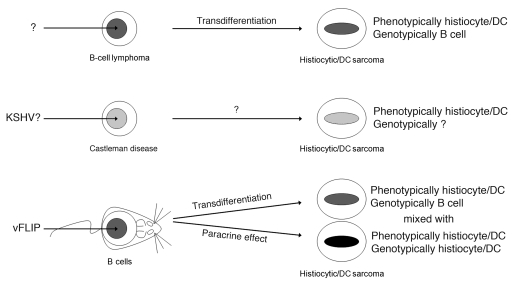Figure 8. Model of vFLIP-mediated tumorigenesis, cell reprogramming, and paracrine stimulation of histiocytic/DCs.
The expression of KSHV vFLIP alone in B cells initially results in pathological alterations mimicking MCD and eventually leads to the development of B cell–derived tumors via transdifferentiation, as evidenced by the biphenotypic features of the tumor cells (i.e., phenotypically macrophage/DCs, genotypically B cells). This surprising phenotype has a correspondence in human pathology (i.e., development of follicular/DC sarcoma in a patient with previously diagnosed Castleman disease) and underlines an existing plasticity between B cell and macrophage/DC lineages, as recently reported also for other B cell malignancies (e.g., FL). Moreover, the expansion of phenotypically and genotypically genuine macrophage/DCs, as observed in the Tg mouse spleen, suggests that vFLIP-expressing B cells can sustain the proliferation of this compartment also via a paracrine mechanism. This process may contribute to the cell heterogeneity seen in KS, which is typically characterized by abundant histiocytic infiltrate of unknown origin and function.

